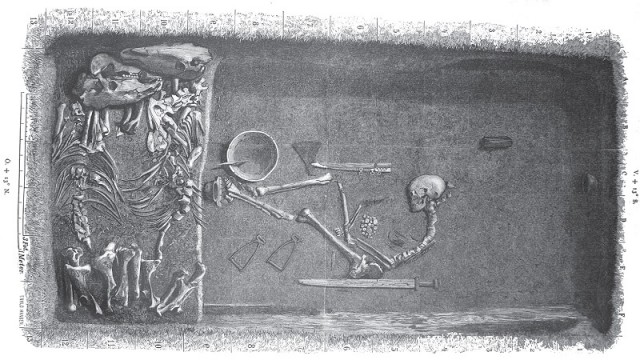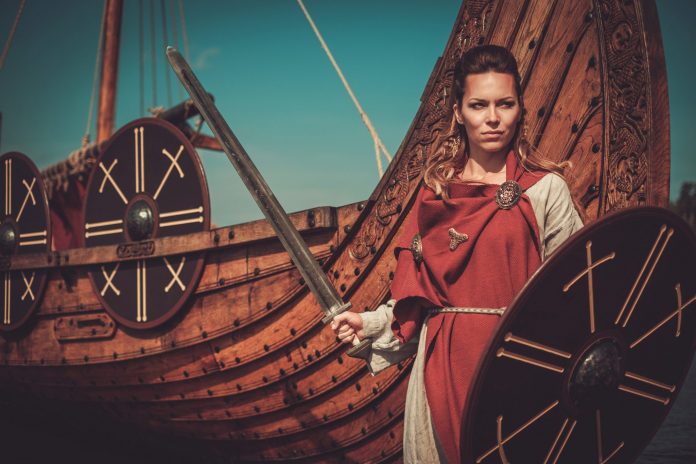Birka, Sweden.
Ten years ago, archaeologists and historians found the remains of what seemed to be a fierce warrior in the Viking Age town, Birka, in Sweden. Buried together with two horses and war equipment, the warrior was originally thought to have been a man because of the items found in the grave.
Turns out archeologists assumed incorrectly.
Recent osteology and DNA-tests show that the remains belonged to a female:
“It’s actually a woman, somewhere over the age of 30 and fairly tall, too, measuring around 5″6,” archaeologist Charlotte Hedenstierna-Jonson of Uppsala University, told The Local. The findings were made during a study, which is published in the American Journal of Physical Anthropology.
The woman was buried in the mid-10th century together with several deadly weapons and two horses.
“Aside from the complete warrior equipment buried along with her — a sword, an ax, a spear, armor-piercing arrows, a battle knife, shields, and two horses — she had a board game in her lap, or more of a war-planning game used to try out battle tactics and strategies, which indicates she was a powerful military leader,” Hedenstierna-Jonson said and added, “She has most likely planned, led and taken part in battles.”.

The grave where the woman was found was discovered and excavated by Hjalmar Stolpe, a Swedish archeologist, at the end of the 19th century. Hedenstierna-Jonson described the grave as being “the ultimate warrior Viking grave”. The belongings found in the grave were presumed to belong to a man simply because of their “manly” nature. But when Anna Kjellström, an osteologist at Stockholms University, had a look at the remains a few years ago – she noticed something interesting. The cheekbones were thinner and much finer than what the remains of a man would be, and the hip bones were feminine.
After an osteological and DNA-analysis, it was confirmed, the remains belonged to a woman.
“This image of the male warrior in a patriarchal society was reinforced by research traditions and contemporary preconceptions. Hence, the biological sex of the individual was taken for granted,” Hedenstierna-Jonson, Kjellström and the eight other researchers behind the study, noted in the report.
Hedenstierna-Jonson described it as a fantastic find but said it is unlikely to completely up-end historians’ view of the Viking society as being patriarchal, mainly constituting of male warriors. “It was probably quite unusual [for a woman to be a military leader], but in this case, it probably had more to do with her role in society and the family she was from than her gender,” Hedenstierna-Jonson told the Local.
We can only wonder about the exciting life of this woman, and how many more, similar to her, existed during the Viking Era.
Originally published on November 28, 2017.





